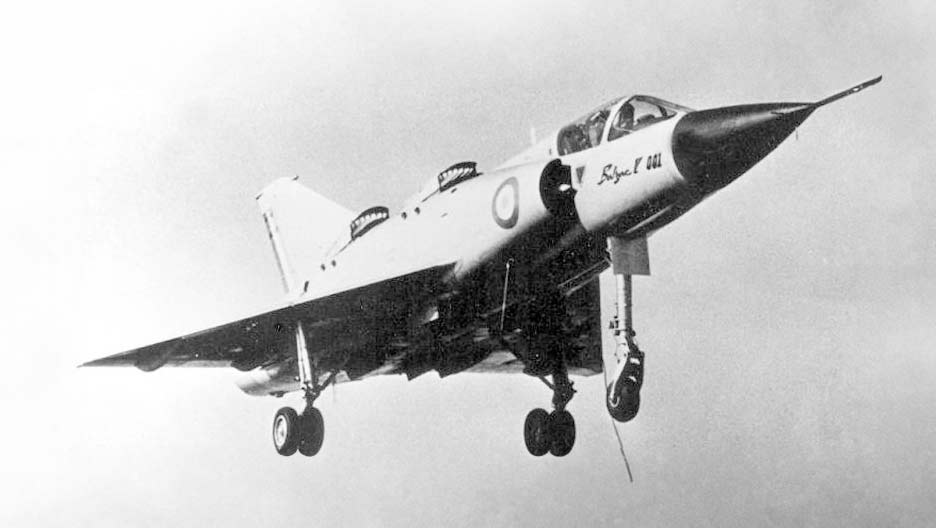French experimental VTOL aircraft developed in the 1960s for testing vertical/short takeoff and landing.
In Brief
The Dassault Balzac V, an experimental VTOL (Vertical Take-Off and Landing) aircraft, originated from France in the early 1960s. Designed primarily to explore the capabilities and limitations of VTOL technologies, it was based on the Dassault Mirage III. The Balzac V featured eight small lift engines for vertical lift and a single main engine for forward flight, highlighting the complex engineering challenges of combining jet-powered vertical and conventional flight in a single airframe. Despite its innovative design, the program faced significant challenges, including accidents that ultimately limited its development.
History of the Development of the Dassault Balzac V
In the late 1950s and early 1960s, the era of jet-powered flight was rapidly evolving, with nations seeking to push the boundaries of aviation technology. France, with its rich history of aviation innovation, embarked on an ambitious project to explore the potential of VTOL aircraft. This interest culminated in the development of the Dassault Balzac V, a program initiated by the French government and Dassault Aviation. The primary objective was to create a platform for testing the feasibility of VTOL operations in a military jet, aiming to enhance operational flexibility and reduce the dependency on conventional runways.
The program was officially launched in the late 1950s, with the Balzac V taking its first flight on October 13, 1962. This aircraft was a direct derivative of the Dassault Mirage III, modified to incorporate VTOL capabilities through the addition of eight vertically mounted lift engines in addition to its main engine. The name “Balzac V” did not have a specific NATO nickname, reflecting its unique status as a purely experimental and nationally focused project.
The development of the Balzac V was driven by the strategic need for aircraft that could operate from improvised bases close to the front lines, especially in the context of Cold War tensions. The concept of VTOL aircraft promised to revolutionize military aviation, offering unparalleled flexibility in deployment and operations. However, the Balzac V also served as a testbed for technologies that would later influence the development of other aircraft, including the more advanced Dassault Mirage IIIV.
Design of the Dassault Balzac V
The Balzac V’s design was a marvel of engineering, incorporating both a Pratt & Whitney JTF10-A-3A turbojet for forward flight and eight Rolls-Royce RB108 turbojets for vertical lift. These engines were strategically placed within the aircraft’s body, with the lift engines aligned to provide balanced vertical thrust. The aircraft’s dimensions and weight were carefully managed to accommodate this unique propulsion system, resulting in a design that was both innovative and complex.
The inclusion of VTOL capabilities presented significant advantages, such as the ability to operate from confined spaces and the potential for rapid deployment. However, these advantages came at the cost of increased mechanical complexity and challenges in stability control during vertical takeoff and landing phases. The Balzac V’s design efforts contributed valuable insights into the integration of VTOL technologies into jet-powered aircraft, laying the groundwork for future advancements in this field.

Performance of the Dassault Balzac V
The performance characteristics of the Balzac V were a testament to its experimental nature. With its main engine producing a thrust sufficient for high-speed flight and the lift engines designed for vertical maneuvers, the aircraft demonstrated the potential for seamless transition between vertical and horizontal flight modes. However, the Balzac V’s performance was also marked by limitations in speed, range, and payload capacity compared to conventional aircraft, a common trade-off in early VTOL designs.
Comparatively, the Balzac V’s performance metrics were modest against contemporaneous aircraft designed for traditional runways. Yet, its value lay not in competing with these aircraft but in pioneering a new domain of flight, offering insights that would inform the development of more advanced VTOL designs.
Variants of the Dassault Balzac V
The Dassault Balzac V remained a unique prototype, with no direct variants produced. However, its development paved the way for the Dassault Mirage IIIV, an aircraft that expanded on the Balzac V’s VTOL experiments with improved performance and capabilities. The Mirage IIIV incorporated lessons learned from the Balzac V, representing a natural evolution of France’s VTOL aircraft development efforts.
Military Use and Combat of the Dassault Balzac V
The Dassault Balzac V, being an experimental aircraft, did not see direct military use or combat. Its role was primarily as a technology demonstrator and testbed for VTOL concepts and technologies. The insights gained from the Balzac V’s testing program were instrumental in advancing the field of VTOL aviation, influencing future military aircraft designs but not directly engaging in combat operations or being sold to other countries.
The experimental nature of the Balzac V meant that it did not replace or succeed any specific aircraft in active military service. Instead, its legacy is seen in the technologies and design philosophies that have been incorporated into subsequent VTOL and STOVL (Short Take-Off and Vertical Landing) aircraft, reflecting the ongoing evolution of military aviation capabilities.
The Dassault Balzac V stands as a pivotal chapter in the history of VTOL aircraft development. Despite its short-lived and experimental nature, the lessons learned from its design, performance, and testing have had a lasting impact on aviation technology. The Balzac V’s contribution to the understanding of VTOL capabilities has paved the way for future innovations, underscoring the value of experimental aircraft in pushing the boundaries of what is possible in aerospace engineering.
Back to the experimental aircraft section.